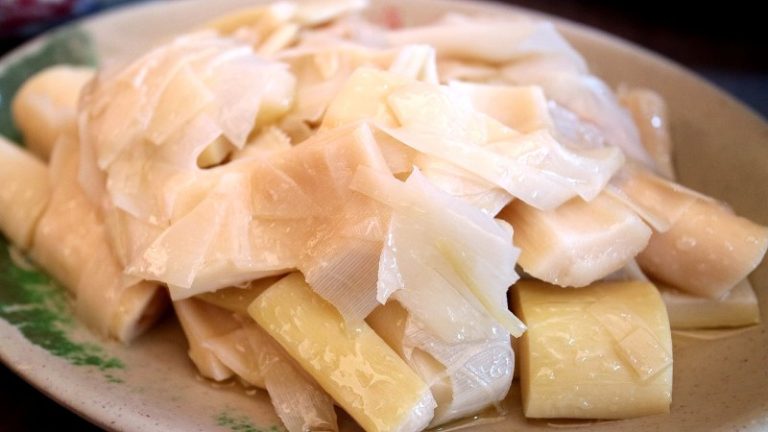What Does Stingray Taste Like?
Quick Answer
Stingray meat is often described as having a mild, sweet flavor similar to scallops or white fish. The texture can be flaky but has a unique cartilaginous structure. It’s a versatile meat that absorbs the flavors of seasonings and sauces well, making it suitable for various cooking methods like grilling, frying, and steaming.
What Is A Stingray?
A stingray is a type of cartilaginous fish belonging to a group of rays, which are closely related to sharks. Unlike most types of bony fish, stingrays have a skeleton made of cartilage, similar to that of sharks. They are primarily found in coastal tropical and subtropical marine waters, but some species can also be found in freshwater environments.
Stingrays are easily recognizable by their flat, disk-shaped bodies and long, whip-like tails. The tail usually contains one or more venomous spines, which the animal uses for defense against predators. Stingrays are generally bottom-dwellers, often burying themselves in sand or mud. They feed on a diet that includes small fish, crustaceans, and mollusks, often using their flexible pectoral fins to dig or sweep the ocean floor in search of food.
Although stingrays are generally not aggressive towards humans, they can deliver a painful or potentially dangerous sting if stepped on or threatened. Therefore, caution is advised when wading in waters where stingrays are known to inhabit.
Stingrays are also significant in various cultures for their culinary, medicinal, and even spiritual value. However, the issue of overfishing and the ecological impact of hunting them has raised concerns about their sustainability.
What Does Stingray Taste Like?
Stingray meat is generally characterized by a mild and sweet flavor, making it an intriguing choice for those who enjoy seafood.
Unlike stronger-tasting fish varieties, stingray offers a more subtle taste that can be comparable to scallops or flaky white fish like cod or tilapia.
Its delicacy allows it to easily absorb the flavors of any accompanying sauces or seasonings, making it highly versatile in a wide range of dishes.
Unique Flavor Characteristics
While stingray shares similarities with other types of seafood, it does possess unique flavor characteristics that set it apart. Some connoisseurs note that it has a slightly nutty or earthy undertone that adds depth to its overall flavor profile.
This nuance can make stingray an exciting ingredient for more complex dishes, where its unique subtleties can shine through without being overpowering.
Additionally, because it comes from a cartilaginous fish, the meat has a unique structural composition that may contribute to its distinct mouthfeel and flavor.
What Is The Texture Of Stingray Like?
The texture of stingray meat can be described as flaky yet firm, somewhat akin to white fish such as cod or snapper.
However, unlike most bony fish, stingray is a cartilaginous fish, meaning its structure is supported by cartilage rather than bone. This unique anatomical feature gives the meat a somewhat different mouthfeel that is less fibrous and more cartilaginous, somewhat resembling that of certain shellfish like scallops.
The meat is usually tender and moist when cooked properly, setting it apart from the often denser textures of crustaceans like lobster or shrimp.
Effects of Preparation Methods
The texture of stingray can vary greatly depending on how it’s cooked. Grilling or barbecuing often imparts a smoky flavor and can make the outer layers slightly crispy while keeping the inside tender.
Frying can lend a crunchy texture to the outer surface, while the interior remains soft and flaky. Steaming or poaching, on the other hand, can result in a more uniformly tender and moist texture throughout.
However, like many other types of seafood, overcooking stingray can make it tough and rubbery, so careful timing and technique are essential for optimal texture.
FAQs
Is The Texture Of Stingray Similar To Other Fish?
The texture of stingray is flaky yet firm, resembling white fish such as cod. However, because stingray is a cartilaginous fish, it has a unique, less fibrous and more cartilaginous mouthfeel.
Is Stingray An Acquired Taste?
Generally, no. The mild and sweet flavor profile of stingray makes it accessible even for those who are new to seafood or have less adventurous palates.
How Is Stingray Usually Cooked?
Stingray can be grilled, fried, or steamed. Each cooking method affects its texture differently, with grilling often making the exterior slightly crispy while keeping the inside tender, and steaming leading to a more uniformly tender texture.
Does Stingray Have Any Unique Flavor Characteristics?
Some food enthusiasts describe stingray as having a slightly nutty or earthy undertone that adds depth to its overall flavor, making it distinct from other types of seafood.
Is It Safe To Eat Stingray?
Yes, it is generally safe to eat stingray, but like all seafood, it should be fresh and properly cooked to minimize the risk of foodborne illness.
What Dishes Feature Stingray?
Stingray is used in a variety of dishes around the world, including stingray curry, barbecued stingray, and even stingray sushi in some places.
How Should I Season Stingray?
Because of its mild flavor, stingray pairs well with a wide variety of seasonings, from simple salt and pepper to more complex marinades and sauces.
Does Stingray Taste Good?
The taste of stingray is generally described as mild and sweet, making it a palatable option for most seafood lovers. Its subtle flavor allows it to take on the taste of spices and sauces used in cooking, making it versatile for various recipes. Those who enjoy scallops or mild white fish will likely find stingray to be a delicious choice.
Does Stingray Taste Like Fish?
Stingray does share some similarities with other white fish such as cod or tilapia, mainly in its mild, subtly sweet flavor. However, it has a unique texture and some nuanced flavor notes that distinguish it from traditional bony fish. Some people even describe it as having a slightly nutty or earthy undertone.
Can You Eat Stingray Raw?
Eating raw stingray is not commonly practiced and poses health risks similar to consuming any raw seafood, such as bacterial infection or parasites. Always make sure to cook stingray properly to minimize any risks. If you are considering consuming raw stingray, consult experts and follow strict food safety guidelines, including using sashimi-grade fish if available.
What Does Stingray Liver Taste Like?
The liver of the stingray is not commonly consumed and therefore less is known about its specific taste profile. In general, the livers of many fish species have a richer, more intense flavor compared to their flesh and may have a somewhat metallic or minerally taste. If you are considering eating stingray liver, make sure it is sourced and prepared safely.
Does Stingray Taste Like Scallop?
Stingray has a flavor that is often compared to scallops due to its mild, sweet profile. The texture is also somewhat similar, although stingray meat is flakier and less dense. Both can absorb the flavors of seasonings and sauces well, making them versatile in the kitchen.
Is Stingray Safe To Eat?
Yes, stingray is generally safe to eat when properly sourced and cooked. Like all seafood, it should be fresh and cooked to the proper internal temperature to minimize the risk of foodborne illness. Some species of stingray may be at risk of overfishing, so always check for sustainability guidelines when purchasing.
Are Stingrays Chewy?
The texture of properly cooked stingray is usually tender and flaky rather than chewy. However, overcooking or improper preparation can result in a tougher, rubbery texture. Its unique cartilaginous structure also gives it a different mouthfeel compared to bony fish, but it should not be chewy when cooked correctly.
What Tastes Best With Stingray?
Due to its mild flavor, stingray pairs well with a variety of seasonings and sauces. Garlic, lemon, and herbs like cilantro and parsley are common choices. In Asian cuisine, it’s often served with spicy sambal or tamarind-based sauces. Stingray can also be used in curries, taking on the flavors of coconut milk and spices like turmeric and cumin. Its subtle taste makes it a versatile ingredient that can adapt to many different culinary styles and flavors.




